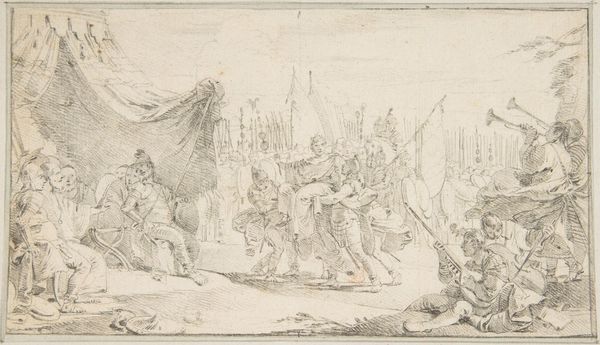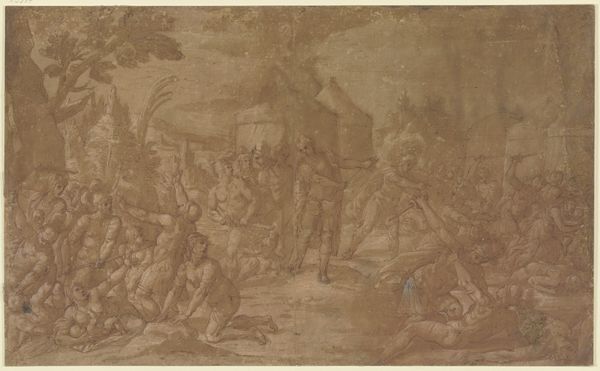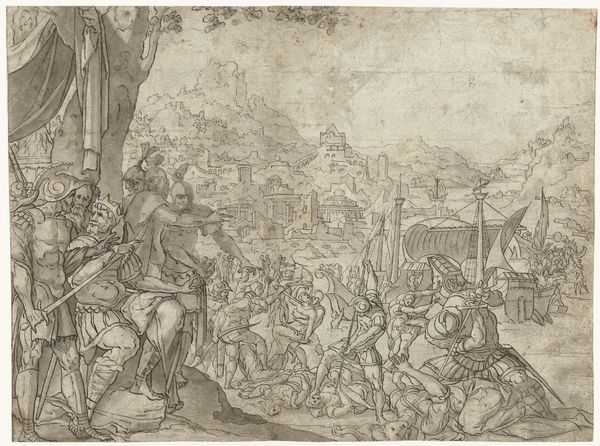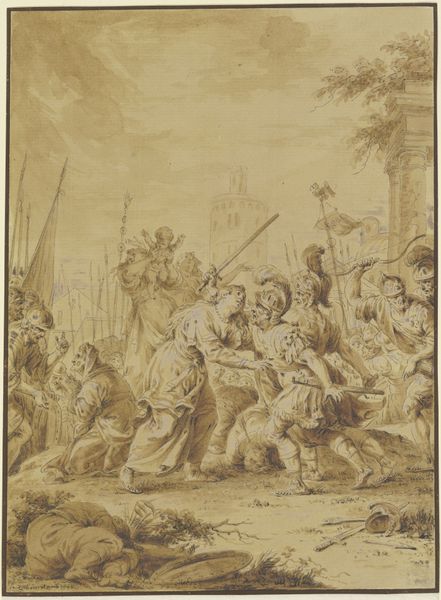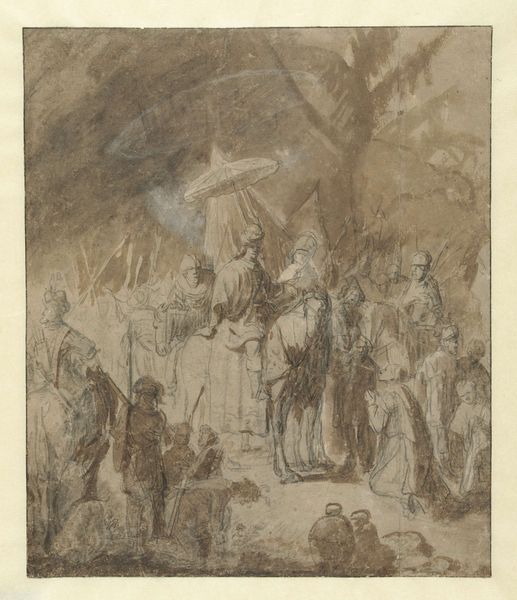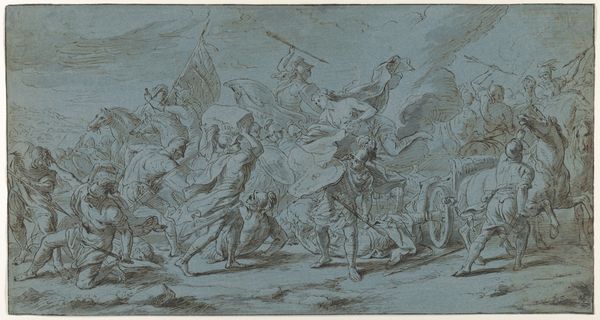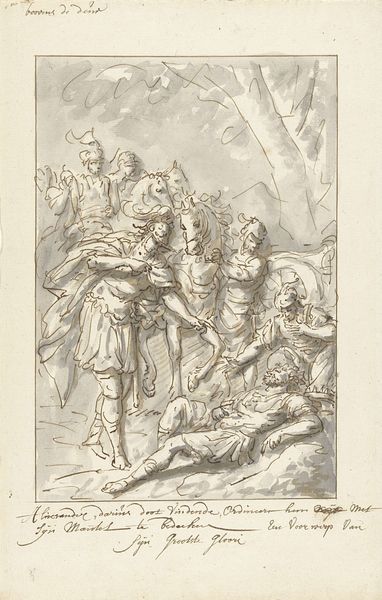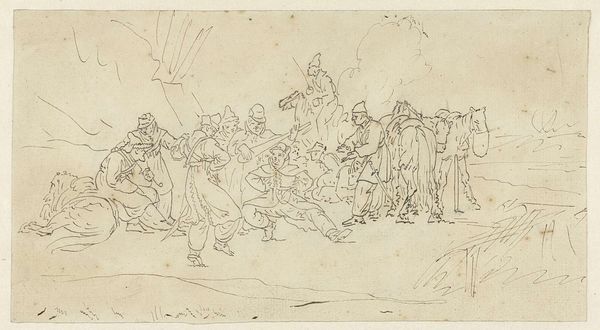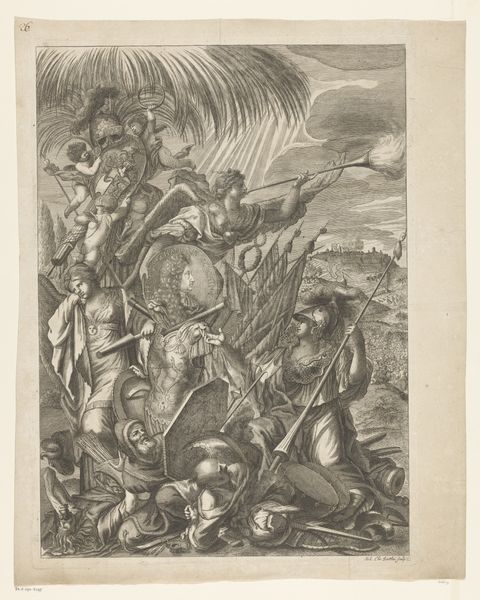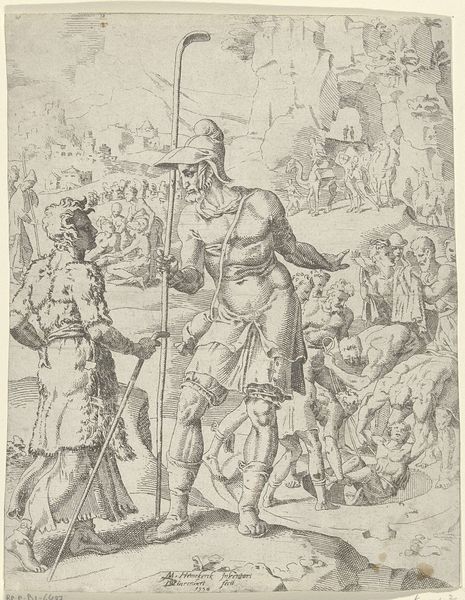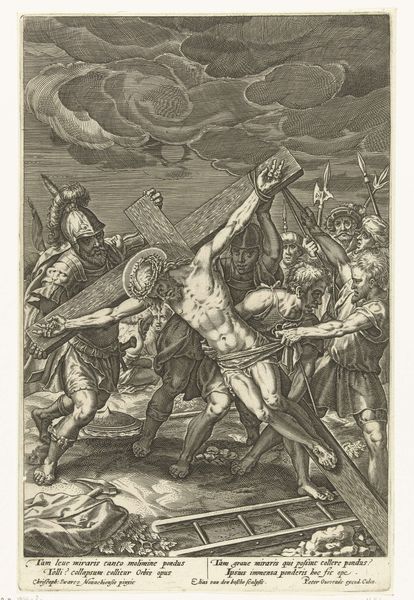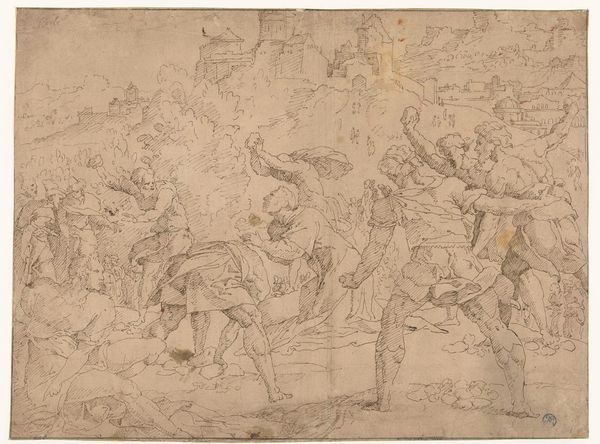
drawing, ink
#
drawing
#
ink drawing
#
baroque
#
figuration
#
ink
#
history-painting
Dimensions: height 412 mm, width 290 mm
Copyright: Rijks Museum: Open Domain
Gian Antonio Burrini made this sepia drawing of “The Arrest of Christ” at an unknown date, sometime between 1656 and 1727. Burrini, who spent his career in Bologna, Italy, was known for his religious paintings in the Baroque style. This drawing depicts a moment of betrayal, and the collapse of social order: Christ, who is here surrounded by a frenzied mob of soldiers and onlookers, had come to Jerusalem as a celebrated Messiah, and was soon after condemned as a dangerous insurrectionist. The soldiers wear anachronistic Roman armor, which was typical for the time, but also speaks to the sense of historical repetition that is central to the work. The image is a study in contrasts, between light and dark, order and chaos. A close look reveals an interplay between the overall scene and smaller details. A crescent moon hangs over the scene, but the action is illuminated by torches and a lantern, highlighting the role of human actors in this pivotal event. The tools of the historian can help us to understand its meaning and power, for example, through examination of period documents that shed light on the image’s cultural and institutional context.
Comments
No comments
Be the first to comment and join the conversation on the ultimate creative platform.
